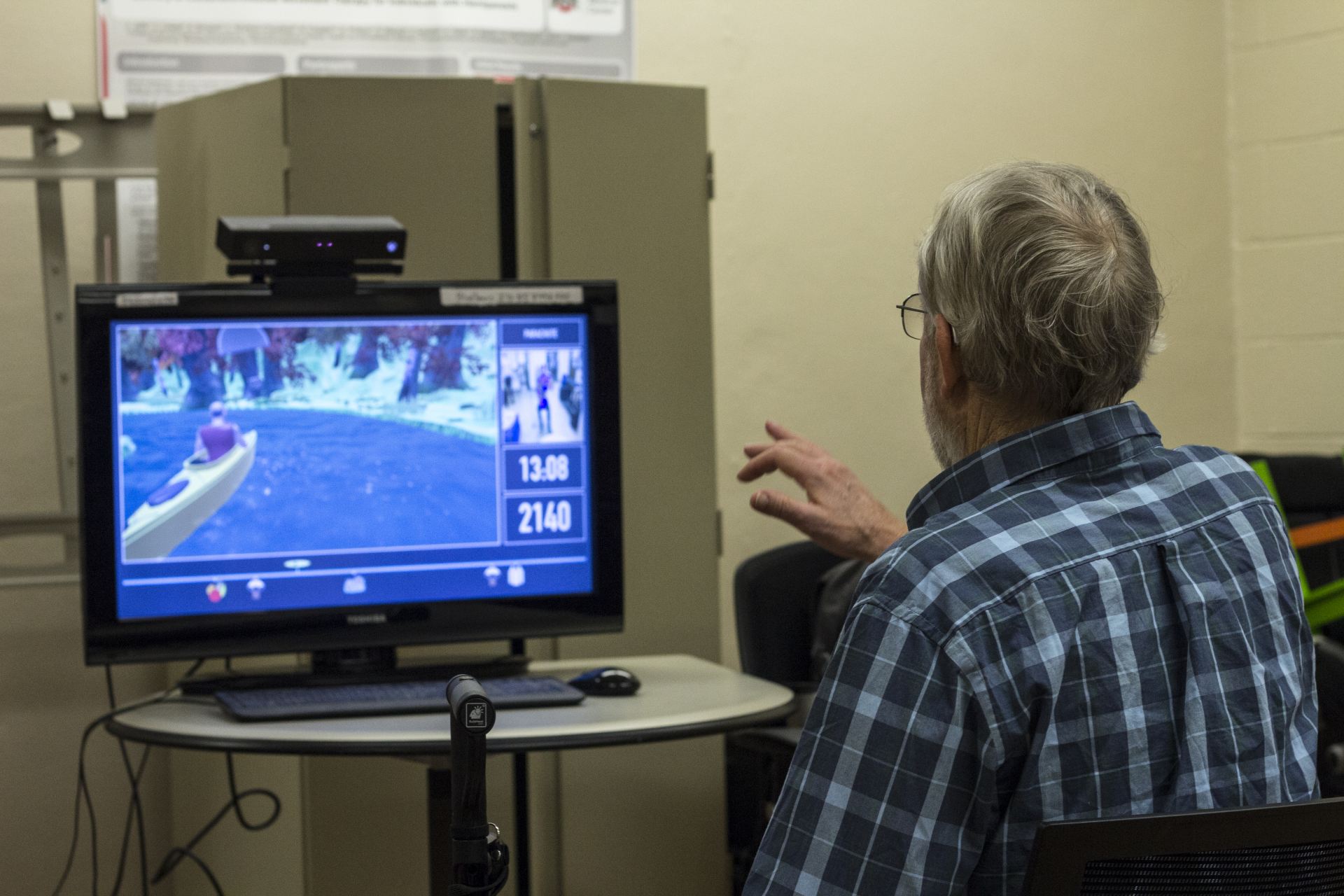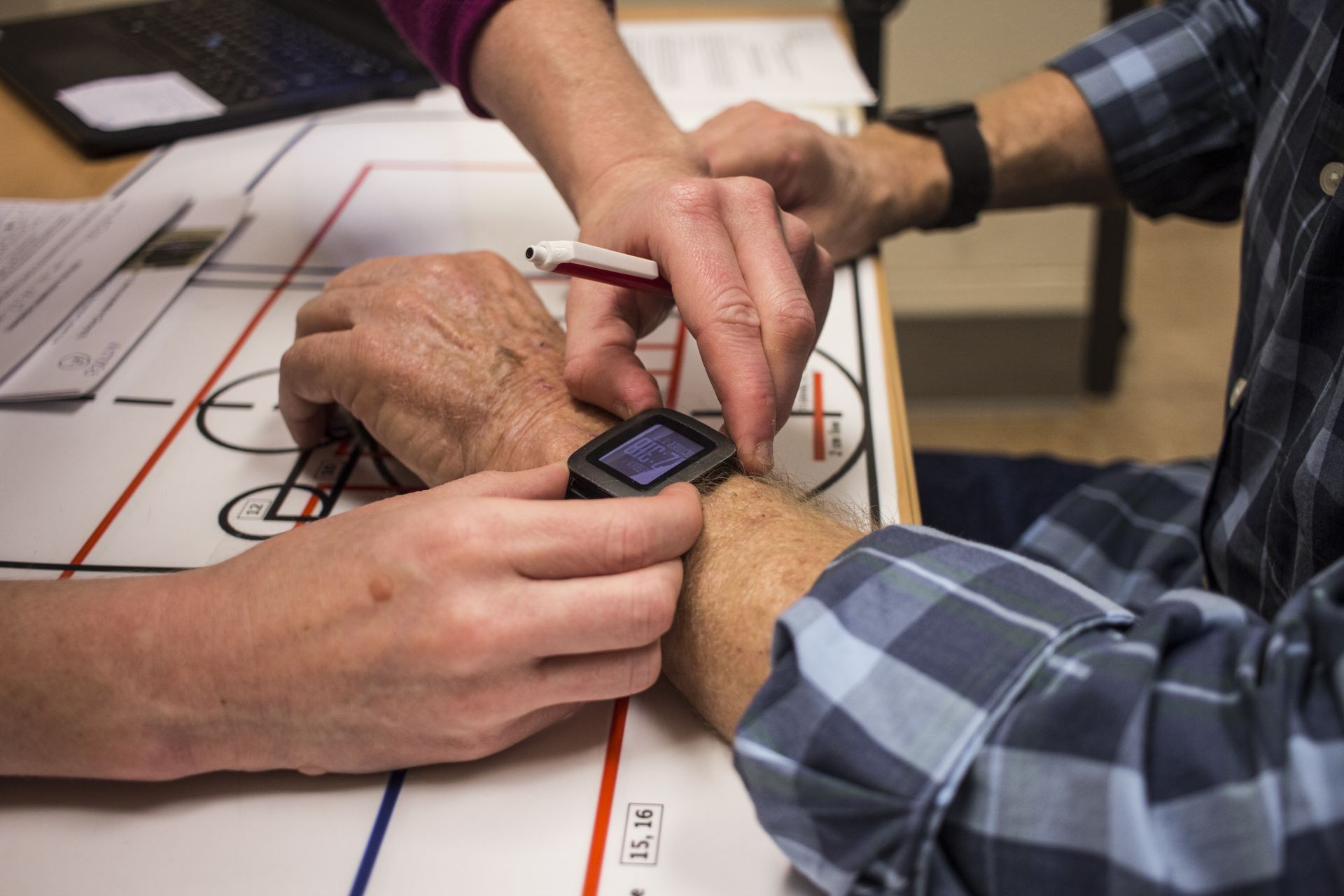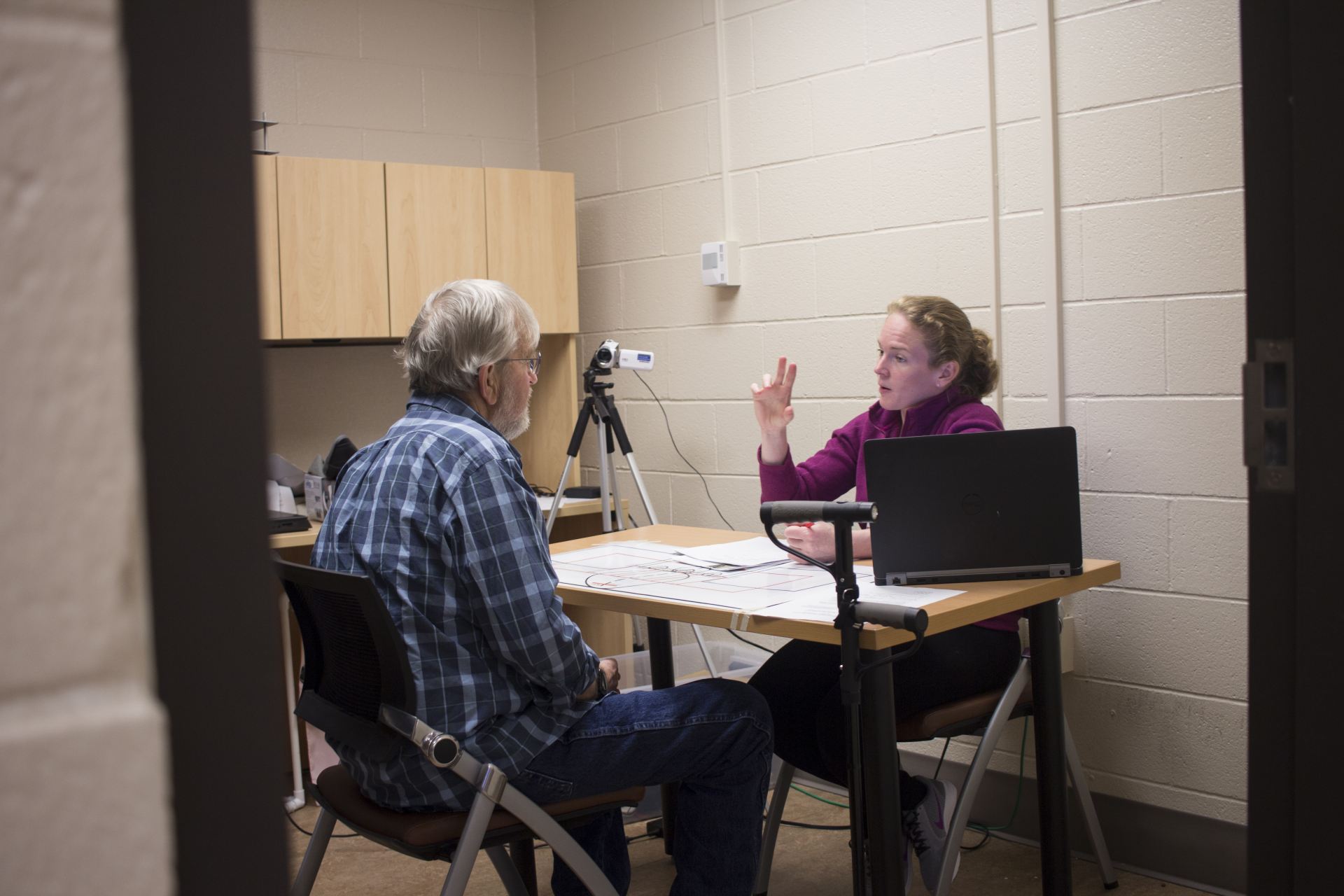
Herb McComas, a patient at the Wexner Medical Center, plays a therapeutic video game using an Xbox Kinect, which tracks movement using a camera. McComas suffered a stroke last December and now uses the video game to improve the mobility in his right hand. Credit: Ris Twigg | Assistant Photo Editor
For gamers, video games are a form of entertainment, but for Lynne Gauthier and her team of Ohio State researchers, they are a way to help stroke and multiple sclerosis patients.
When a stroke occurs, it is common for survivors to have motor weakness on one side of their body. MS patients are affected by motor weakness, as well. Physical therapy is necessary for patients if this health effect occurs.
To make this physical therapy and exercise fun for stroke survivors and MS patients, Ohio State researchers developed the game Recovery Rapids. The video game is designed to mimic many of the movements that would be used during a typical treatment session, but in innovative ways, said Gauthier, director of the Neurorecovery and Brain Imaging Laboratory at Ohio State.
While searching for ways to reduce motor-training time and increase behavioral-training time for patients, Gauthier and her team found the Xbox Kinect, Gauthier said. She said using the gaming system takes away a lot of the motor training from the therapists.
“To use technology to better people’s lives, that is my mission,” she said.
Some of the tasks performed in the game include paddling a canoe down a river, fishing, collecting fruit, avoiding rocks in the rapids, catching parachutes containing supplies, and steering to capture treasure chests.
The best part is that the treatment would be cheaper and often more engaging, Gauthier said. Most patients want to continue training after their prescribed treatment and find it fun.
Herb McComas — who had a stroke last December — plays the game for about an hour each night.
“There is a lot of movement with the game. You are busy the whole time,” McComas said. “I kind of enjoy it because each time I do, I try to get competitive with my last score.”
McComas’ right arm is the weaker of the two, but his movement has been improving with treatment, he said.

Kristina Kelly, a physical therapist at the Wexner Medical Center, adjusts patient Herb McComas’ watch, which tracks how often he uses each hand. When McComas came into the Wexner on Oct. 17 for his usual appointment, he had 600 more movements in his left hand than his right. Credit: Ris Twigg | Assistant Photo Editor
“I can be sore throughout the shoulder and elbow and I usually play three or four times,” McComas said. “By the time I get through the first one, I am losing the pain in my elbow and it starts to loosen up and makes it feel better.”
Compared with traditional treatment, the game brings more activity to the patient during treatment, McComas said. “It keeps you very busy and keeps your mind off the pain and exercise.”
“You are busy paddling the canoe and catching things, it is a challenge and you have to keep with it,” he said. “You don’t have a break because once it starts it is always doing something.”
McComas said he was never one for video games, but he decided to buy an Xbox and Kinect for in-home use and continued treatment.
There is a lot to learn about recovery from this research, Gauthier said. Researchers are still unaware where improvement and recovery reach their maximum potential.
“With this gaming technology, because it is collecting movements, we can track their movements over time,” Gauthier said. “We can be more efficient with the rehab.”
The video game was designed based off the movement typically used in constraint-induced (CI) movement therapy, which is the gold standard for helping stroke survivors recover, Gauthier said. The team was looking for a new way to incorporate technology into this treatment.
CI therapy is an intensive movement program that attempts to improve quality of life and behavioral changes that help overcome mental neglect on the weaker side of the body post-stroke.
She said the patient receives 35 hours of training, 30 hours of motor training and five hours of behavioral training.

Patient Herb McComas (left) tells Kristina Kelly (right), a physical therapist at the Wexner Medical Center, about daily activities he struggles with. For McComas, buttoning his shirt is the most difficult. Part of Kelly’s job is to help McComas develop new behavioral strategies for improving his mobility. Credit: Ris Twigg | Assistant Photo Editor
“Because the therapists have a very limited amount of time, they have trouble fitting in the motor training and the behavioral piece,” Gauthier said. “When you take out the behavioral piece, the treatment outcomes are a lot worse.”
The behavioral changes help retain learned movements from motor therapy and use of the weaker arm in daily life, she said.
“We found that there was a very tight relationship between the amount they improved use of their weaker side and quality of life improvement,” Gauthier said. “We are seeing it across all different domains of quality of life. Not just in the motor function area, but also social roles and family participation.”
“The therapist is very skilled at the behavior change piece. That is where the therapist is really needed,” Gauthier said. “They are getting their training through the game and learning to apply that training to their lives in the time they work with the therapist.”


